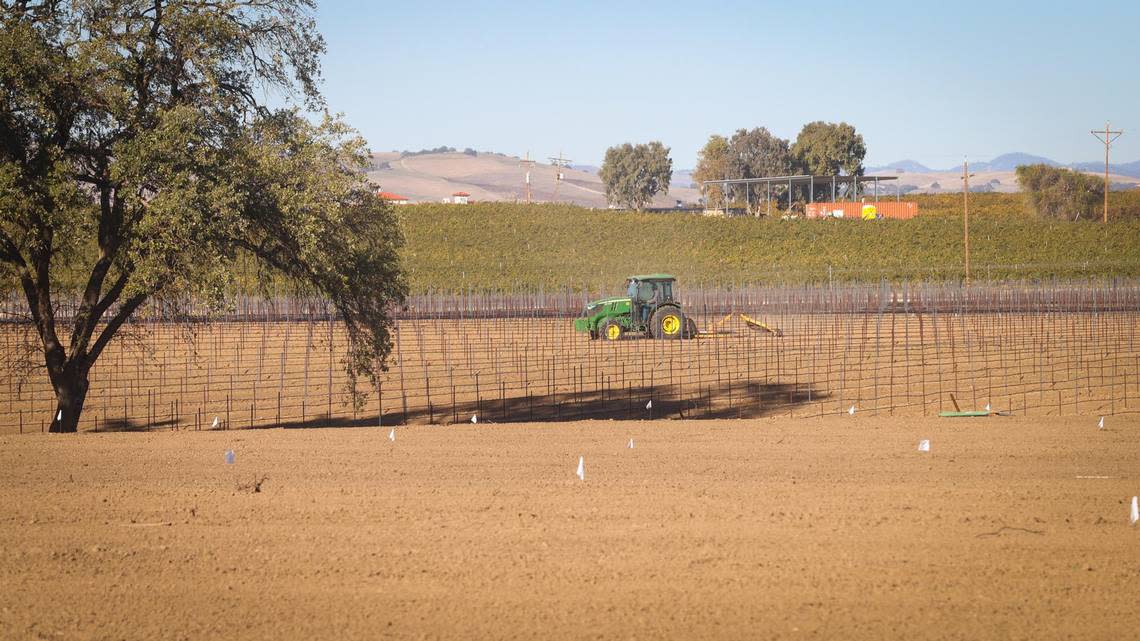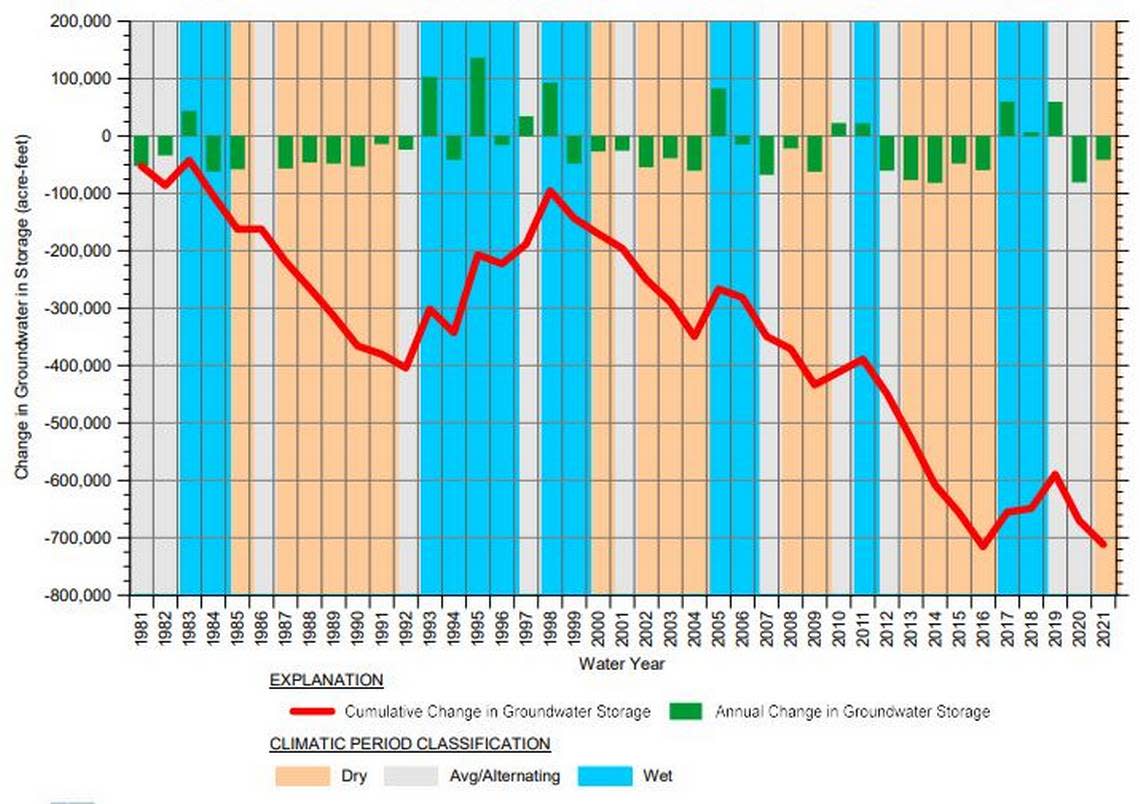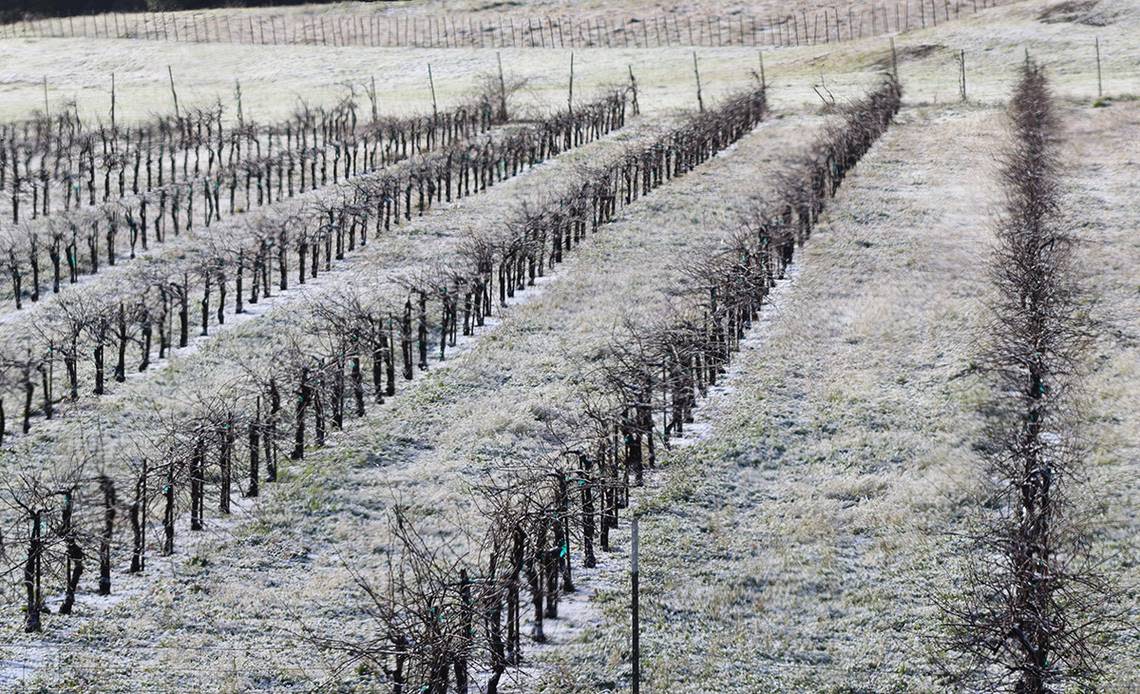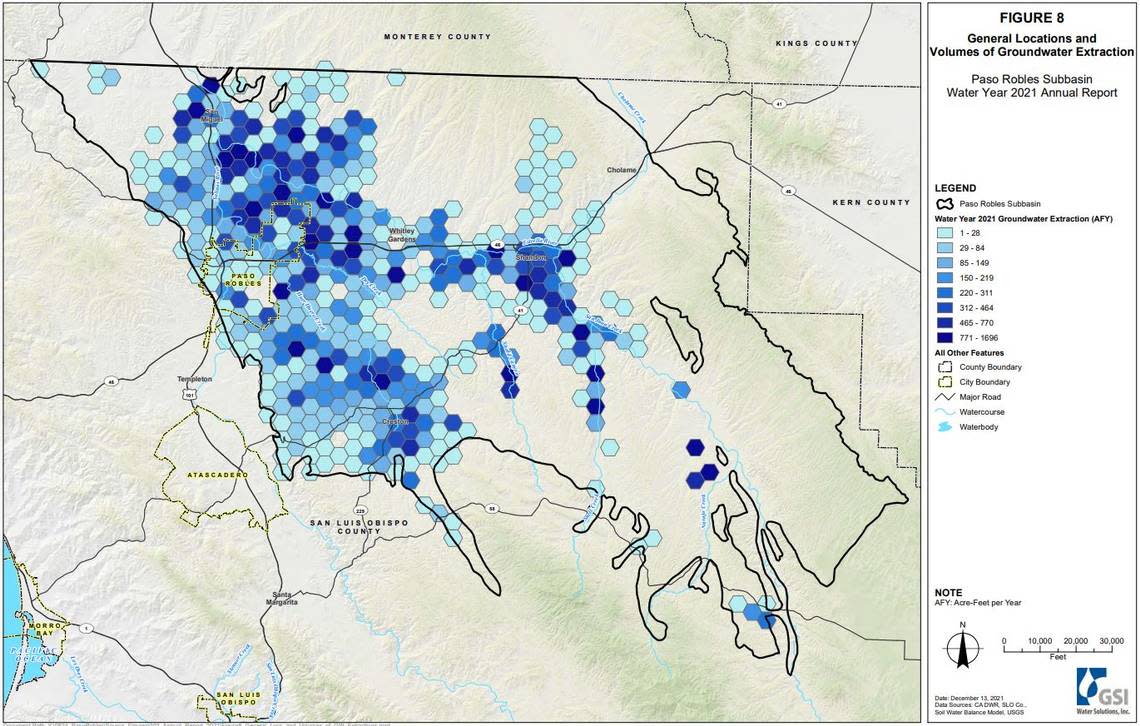State approves Paso Robles groundwater plan, with pumping limits and monitoring
Water-pumping limits and monitoring are coming to some areas of the Paso Robles Groundwater Basin after the state approved a plan that aims to re-balance use in the critically overdrafted region.
On Thursday, the California Department of Water Resources signed off on the Paso Robles groundwater sustainability plan,
along with several others across the state.
The plan was previously submitted to DWR in January 2020. However, the state had deemed it “incomplete” and required revisions by July 20, 2021.
The basin is the lifeblood of the region, providing water to grow wine industry’s grapes and sustain rural homeowners.
“This has been a huge lift for the all the GSAs in the basin,” San Luis Obispo County Director of Groundwater Sustainability Blaine Reely said in a prepared statement. “We now have the green light to move forward aggressively to bring the Paso Basin into a sustainable condition.”
Had DWR not approved the plan, management of the basin would have been turned over to the State Water Resources Control Board.
“We want local to control so we can be more sensitive to the needs of our residents,” Reely said in his statement. “We can now ensure the management strategies are fair and equitable to the groundwater users of the basin.”

Paso Robles groundwater basin overpumped
The Paso Robles groundwater basin was required to have a sustainability plan under the state’s Sustainable Groundwater Management Act because it was deemed “a high priority basin subject to critical conditions of overdraft,” meaning more water had been withdrawn in recent decades than what is sustainable.
The last annual report for the basin, published in April 2022, showed that about 82,100 acre-feet of water was pumped from the basin — much more than the basin’s estimated sustainable yield of 61,100 acre-feet. For context, one acre-foot of water is about 325,851 gallons.
Such overpumping has caused vineyard and residential wells to go dry, leaving people no other option than to truck in water or drill deeper wells at high costs.

Plan calls for users to report the water they pump
The county, alongside the Shandon San Juan Water District, city of Paso Robles and San Miguel Community Services District, worked to draft the sustainability plan. Together, the four entities are called the groundwater sustainability agencies.
The Paso Robles basin’s sustainability plan, which goes into effect immediately, calls for a program that will require all users who pump more than 2 acre-feet of water annually to report how much they extract to the groundwater sustainability agencies. Anyone who pumps less than that amount, called a “de minimis” user, does not need to report how much they pump, according to the plan.
Monitoring and reporting on the basin’s conditions, as well as any outreach needed to inform groundwater pumpers about their reporting requirement, is expected to cost $1.15 million, according to the sustainability plan.
The basin’s sustainability plan also calls for the four managing entities to promote best practices for reducing water use. These include things such as more efficient irrigation methods, better accounting of annual precipitation and its contribution to soil moisture, and conversion of high-water-demand crops to lower-water-demand crops, according to the plan.
Additionally, the plan proposes future rainwater capture projects and promotes voluntary fallowing of crop land to reduce overall demand on the basin.

Pumping limitations will be required in certain areas of Paso Robles basin
The plan also notes that the groundwater sustainability agencies will identify and enforce required pumping limitations in certain areas.
“The amount of mandatory pumping limitations is uncertain and will depend on the effectiveness and timeliness of voluntary actions by pumpers and the success of other measures,” the plan states. “An estimated shortfall of 13,700 acre-feet per year will need to be addressed by a combination of increased water supply, conservation and reduction in pumping in order to achieve sustainability.”
The plan suggests that the groundwater pumping restrictions will happen in areas where groundwater levels are persistently declining.
Lastly, the plan outlines several projects that could help boost the basin’s supply and reduce pumping.
This includes pumping recycled water from the city of Paso Robles to groundwater users, or piping in water from the State Water Project, Lake Nacimiento or Santa Margarita Lake.
To meet the requirements under SGMA, the groundwater sustainability agencies must show through annual reports to the state that the Paso Robles basin is balanced by 2040. In total, implementing the plan is expected to cost about $1.56 million per year, according to the plan.

